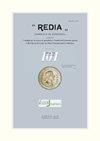SOME BIOTIC LIMITING FACTORS OF DRYOCOSMUS KURIPHILUS (HYMENOPTERA CYNIPIDAE): A SURVEY IN CHESTNUT ORCHARDS NEAR FLORENCE (ITALY)
IF 0.6
4区 生物学
Q3 ZOOLOGY
引用次数: 0
Abstract
The biological control of the Asian Chinese gall wasp (ACGW) Dryocosmus kuriphilus, is influenced by several factors. In 2013, a survey was carried out in three chestnut orchards near Florence (Italy) to investigate ACGW parasitization by native parasitoids and the introduced Torymus sinensis. The following two methods were adopted: the first based on the dissection of cynipid galls with the aim of inspecting cells within each gall and the second based on monitoring adult emergence from galls. Parasitization patterns due to gall position related to plant height were also evaluated. Native parasitoids were more abundant in the upper part of tree crowns in June, while in July and August their activity was more evident in the middle and lower parts of chestnut trees. Conversely, parasitization of T. sinensis, was detected at all plant heights. Plant position within stands also affected the performance of both native parasitoids and T. sinensis, with parasitization that progressively decreasead moving toward the interior of the orchards. Gall necrosis was equally evaluated as a limiting factor of ACGW survival. Among the isolated fungal species, Gnomoniopsis castaneae (Tamietti), an endophyte fungus harmful to fruits, colonized both healthy and necrotic galls together with ubiquitous components of fungal communities such as Alternaria sp., Aspergillus sp., Fusarium sp. and Colletotrichum fioriniae. Our results evidenced that T. sinensis was able control the ACGW, while native parasitoids played only a secondary, though non-negligible, role. Conversely, gall necroses had a minor impact on pest control, as their efficacy was limited to the early stages of gall development. Key words: biodiversity, gall-inducing insects, native parasitoids, fungal species意大利佛罗伦斯附近板栗园干蛾(膜翅目蜂科)的生物限制因素
亚洲瘿蜂(ACGW)的生物防治受多种因素的影响。2013年,在意大利佛罗伦萨附近的3个栗树果园进行了一项调查,调查了本地拟寄生蜂和引进的中国栗蛾对ACGW的寄生情况。采用了以下两种方法:第一种方法是解剖棘鞘虫瘿,目的是检查每个虫瘿内的细胞;第二种方法是监测成虫从虫瘿中羽化。此外,还对与株高相关的瘿位置的寄生模式进行了评价。本地寄生蜂在6月主要分布在树冠上部,7、8月主要分布在栗树中部和下部。相反,在所有株高上均检测到中华夜蛾的寄生。林内的植株位置也会影响原生拟寄生蜂和白桦尺蠖的寄生行为,寄生蜂逐渐向果园内部转移。胆囊坏死同样被评价为ACGW生存的限制因素。在分离到的真菌种类中,对果实有害的内生真菌castaneae (Tamietti)在健康和坏死的果瘿中都有定殖,真菌群落的成分如Alternaria sp.、Aspergillus sp.、Fusarium sp.和炭疽菌(Colletotrichum fioriniae)也普遍存在。我们的研究结果表明,中华按蚊能够控制ACGW,而原生拟寄生虫仅起次要作用,但不可忽略。相反,胆坏死对害虫控制的影响较小,因为它们的功效仅限于胆发育的早期阶段。关键词:生物多样性;瘿虫;原生拟寄生虫
本文章由计算机程序翻译,如有差异,请以英文原文为准。
求助全文
约1分钟内获得全文
求助全文
来源期刊

Redia-Giornale Di Zoologia
ZOOLOGY-
CiteScore
1.20
自引率
20.00%
发文量
18
审稿时长
>12 weeks
期刊介绍:
Redia supports its long history of basic and applied research in entomology and invertebrate zoology in the field of crop and forest tree protection responding at the same time to the increasing need of innovation and technological improvement.
 求助内容:
求助内容: 应助结果提醒方式:
应助结果提醒方式:


